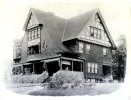
Photo of exterior
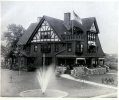
Photo of exterior
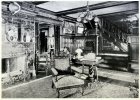
Photo of interior
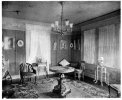
Photo of interior
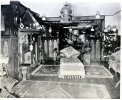
Photo of interior

floor 1 plan

floor 2 plan
Taken from Scientific American, Building Edition. December 1898
 Photo of exterior |
 Photo of exterior |
 Photo of interior |
 Photo of interior |
 Photo of interior |
 floor 1 plan |
 floor 2 plan |
A RESIDENCE AT SPRINGFIELD, MASS.
The residence forming the cover illustration of this number and on pages 93, 98, and 99, is the home of Mr. Louis Frank Newman, of Springfield, Mass., and is known as "Villa Bluff," deriving its name from the bluff on which it is located, overlooking the Connecticut River, with broad views of the Berkshire range of hills, and surrounded by picturesque, winding drives on ail sides, the garden effect being heightened by a series of beautiful terraces.
The exterior of the house is a modified and modernized adaptation of the best features of the seventeenth century English school, with adaptations from the Gothic. The roof lines, for a large house, are particularly harmonious and graceful, being especially adapted to the perplexities of New England climatic conditions. The main architectural features are the pointed gables and the broad second-story overhang, which not only adds fourteen feet in length to the second story, but also forms the roof for the piazzas.
The exterior, roof and sides, are shingled, the main walls of brick, and the piazza foundations and terraces of cobblestone, the four nights of broad steps being of Longmeadow red sandstone. The gables are beamed in the Elizabethan period, and stuccoed with Portland cement, and will be engraved this fall by Gutterman, of New York, with the characteristic work of the old Hanseatic period. This work is comparatively new to this country, but many of the finest old buildings of Hamburg, Bremen, and Lübeck show the beautifying result of this neglected handicraft.
One of the most attractive features of this unique house is the terrace, which forms a part of the front piazza. This piazza is forty-seven feet in length by four-teen feet in width, the ceiling being of Portland cement, and the floor of a red granolithic stone. There is no woodwork on any of the piazzas except the broad columns, resting on a four-inch crandalled edge of Longmeadow sandstone, the base of which is cobblestone. The terrace referred to above forms a part of this piazza, extending out eight feet in addition to the fourteen foot wide piazza, and in this terrace, on a level with the piazza floor, are hundreds of low-growing plants, such as tulips land hyacinths in early spring, and geraniums for the later months.
The main architectural feature of the south side is the coach-door entrance, with its ten by fourteen porch and picturesque cobble and Longmeadow stone treatment. The interior treatment belongs to no particular period, but is planned on the basis of homogeneity of any one part to the whole. The owner's desire was for a home, undivided by unnecessary barriers, such as hallways, every part to be livable and utilizable for living purposes, no part being designed as a mere passageway. As a result, in this whole large house there is no such thing as a hall, excepting a narrow strip in the rear, intended for the servants, passing from their quarters to the guest chambers on the second floor.
The main room on the first floor is the living-room. It occupies the centre of the house, and is about eighteen feet wide by thirty-three feet in length. The old English baronial period lends it character to this room. With its darkest of dark brown oak paneling nearly six feet high, heavy ceiling beams, massive shelf on top of paneling, broad terra-vitra fireplace extending to the ceiling, and massive wrought ironwork embellishing the fireplace, the room is peculiarly impressive and strong.
Out of this room the wide staircase springs, which in an unbroken range extends to the third story. The illustrations and plans accompanying this article are so complete that a full description is unnecessary. We therefore will give more attention to material and color schemes than to constructional features.
On the left of the living-room is the dining-room, one of the best examples of modern Gothic decoration we have seen for some time. Here the paneling is five feet six inches high, with heavy overhanging shelf and massive ceiling beams. The prevailing color scheme is a golden brown, both for the oak woodwork and the walls. The walls, both of this room, the living-room, all the stairways, and the bathrooms, are hung with Berlin linen and hand painted. That of the dining-room is covered with shields and coats of arms, in rich, mellow colors, of old German and Italian principalities.
The drawing-room is to the right of the living-room, in the period of Louis XV. The door and window casings are twelve inches wide, with heavy moulded edge, each side and head casing forming a complete panel in itself, the panel being highly decorated in relief carving, and touched up with gold leaf. The woodwork is finished in old ivory colors, and the walls are hung, from the picture moulding to the baseboard, with heavy old rose color grosgrain silk, arranged in broad fluted panels. Above the picture moulding is a space some twenty inches wide, finished with Berlin linen cloth, hand painted in oils, showing a light green background, with festoons of Rosa Royosa and ribbons. Underneath each of the five window stools, forming a panel, is drab silk tapestry, hand painted with designs from the Boucher school.
The main staircase is four feet wide, of oak, the balustrade toward the living-room consisting of a series of fifteen arches, in place of the stereotyped balusters, the opposite side being paneled to a height of ten feet, terminating in a broad buttress, twelve inches wide on top, which is utilized for palms and ferns. The carriages of the upper stairs, which are immediately over the second story staircase, are cased to form two deep oak panels, there being no plaster on any part of the main staircase.
At the head of the stairs on the second story is the lounging-room, a room eighteen feet square, and from this one enters the guest chambers on the left and the family rooms on the right. Immediately in front of the lounging-room is the Oriental room. This is entered through a series of three Moorish arches, in the centre of each of which is an elaborate copper electric lantern. This room is paneled in whitewood, each panel representing a Moorish arch. The panels are colored as follows: The centre in pea green, the stile in olive, the inside reveal of the arch in vermilion, and the upper reveal of the arch in carmine. The paneling is five feet high, with broad cap, treated in dark olive. The paper above that is a Turkish lace pattern, the figure being white, on a light pink and green background.
In the centre of the north wall is a beautiful tile mantel, of light maroon satin tile, set in Moorish bronze frame. The mantel reaches to the ceiling, and has a hood projecting into the room about three feet. From this room one enters the balcony overlooking the river, Mr. Newman's dressing-room on the left, and Mrs. Newman's apartments on the right.
The apartments on the left of the lounging-room consist of two guest chambers, a balcony, and bathroom; those on the right are Mrs. Newman's, consisting of the bedroom, fifteen by nineteen feet, a dressing-room, twelve by fifteen feet, bathroom and closet, the closet being a room twelve by fourteen, feet, and filled with all kinds of built-in cupboards, chests, drawers, and the like; also a dumb-waiter, connecting directly with the kitchen and laundry.
The bathroom is worthy of mention. It is seven feet wide and ten feet long. The floor is of unglazed hexagonal tile, the walls of embossed glazed tile, five feet high, with sanitary base and heavy tile cap, the casings are of whitewood, put up in twelve-inch panels, handsomely carved in Empire arabesques, the three headpieces of the door representing Neptune's gambol with dolphins and cherubs. Above the tile, on walls and ceiling, is Berlin linen. The artist has painted a sky on the ceiling, and on the walls the "Triumphal Procession of the Mermaid," which occupies the four sides of the room and forms a continuous picture. Besides the usual plumbing appliances, there are shampoo fixtures and a complete shower bath, with rubber curtain attachment.
Off from the rear hall are the linen-rooms and servants' entrances to the third floor. The third floor is approached by a front and rear stairway. The front stairway leads to the baby's playroom and gymnasium, a room fourteen by eighteen feet, and the billiard-room, in which there is a brick fireplace, the breast being eight feet wide and twelve feet high.
The billiard-room is thirty-two feet wide, thirty-six feet in length, and twelve feet high, and is lighted by seven large windows. From this room and from the battlement opening from it one has a panorama of twenty-five miles of river, hills, park, and cities.
Back of these rooms, and separated by a wall, are the servants' bedrooms and bathroom. On the first floor, in addition to the rooms described, are the china closet, butler's pantry, refrigerator room, kitchen, kitchen pantry, and servants' dining-room. In the cellar are the laundry, water closets for the help, vegetable closets, brick ash repositories, gardener's tool house, etc.
The house has a complete sewer system of its own. The electric bell system is very complete, a regular hotel annunciator being located in the kitchen. There are 3,800 feet of electric light and call bell wire, and some 600 feet of speaking tube, to all parts of the house and cellar. The house is lighted by 105 sixteen-candle electric light bulbs. Heat is supplied by the Gorton indirect system.
The contractors for the house were Kelso & Thompson, of Springfield; the decorator, Hans. W. Gotterman, of Brooklyn, and the designer of the house Mr. Newman himself, and his assistant, Carroll H. Pratt.
Note: this house is on Buena Vista Plaza, which is off Longhill St.